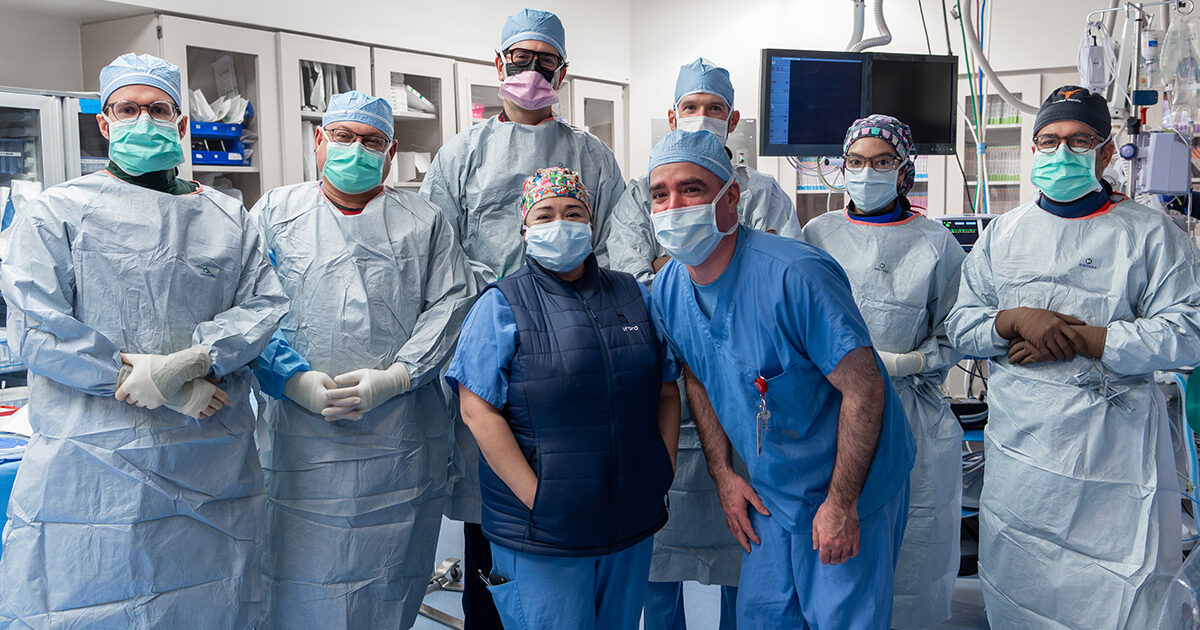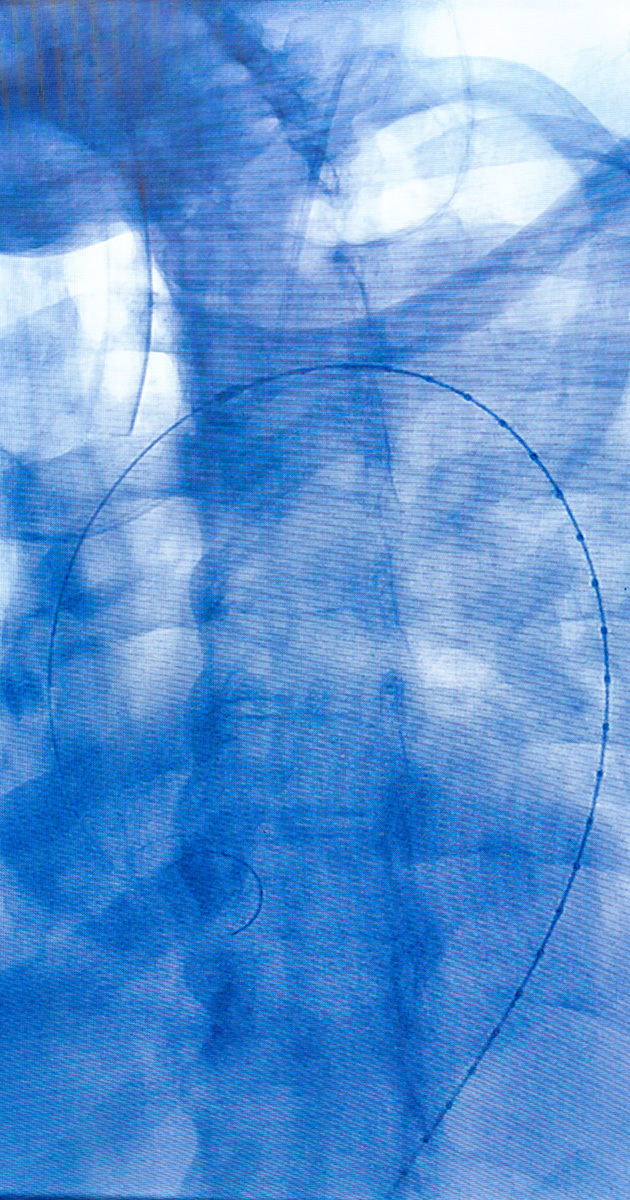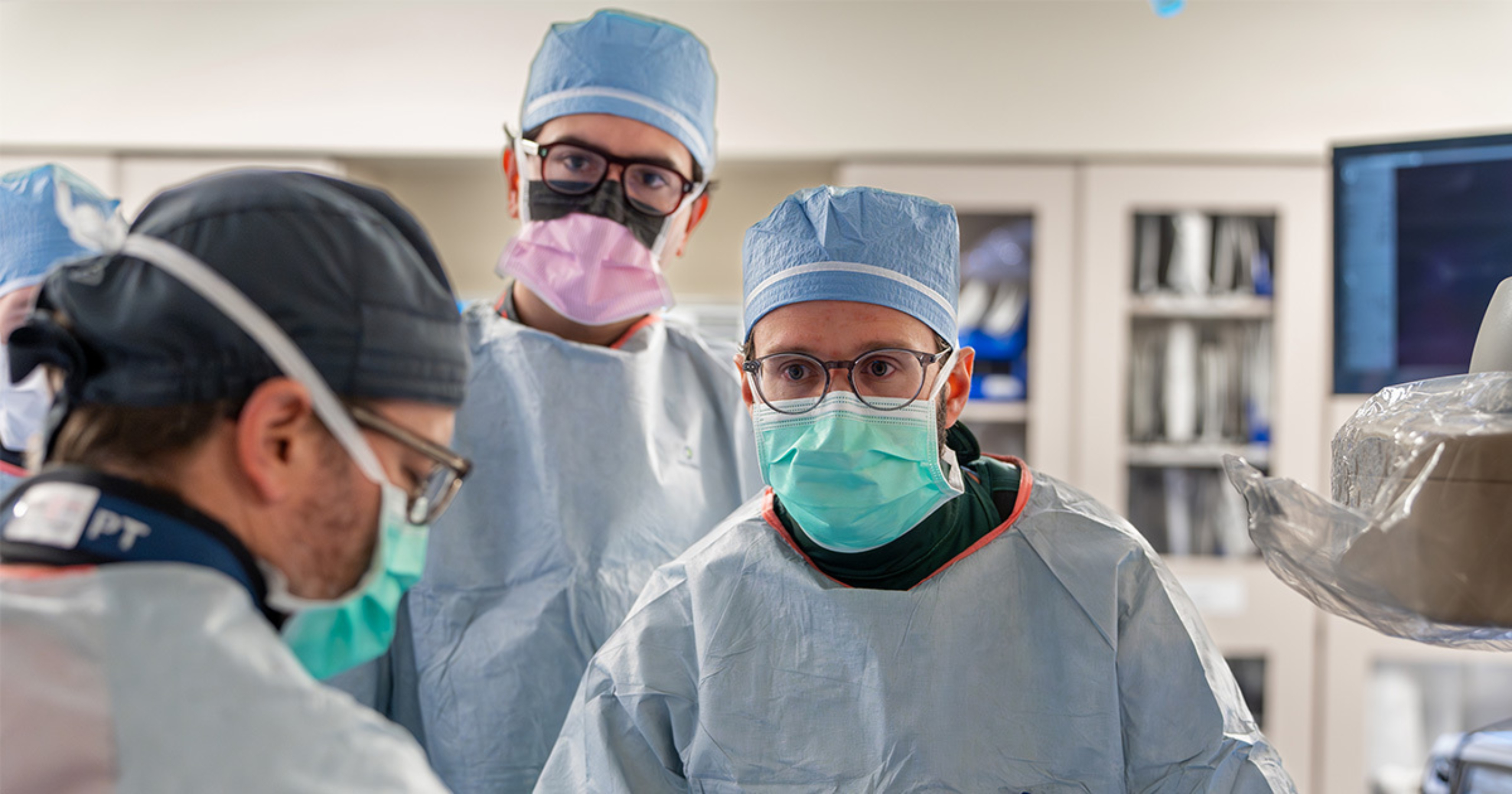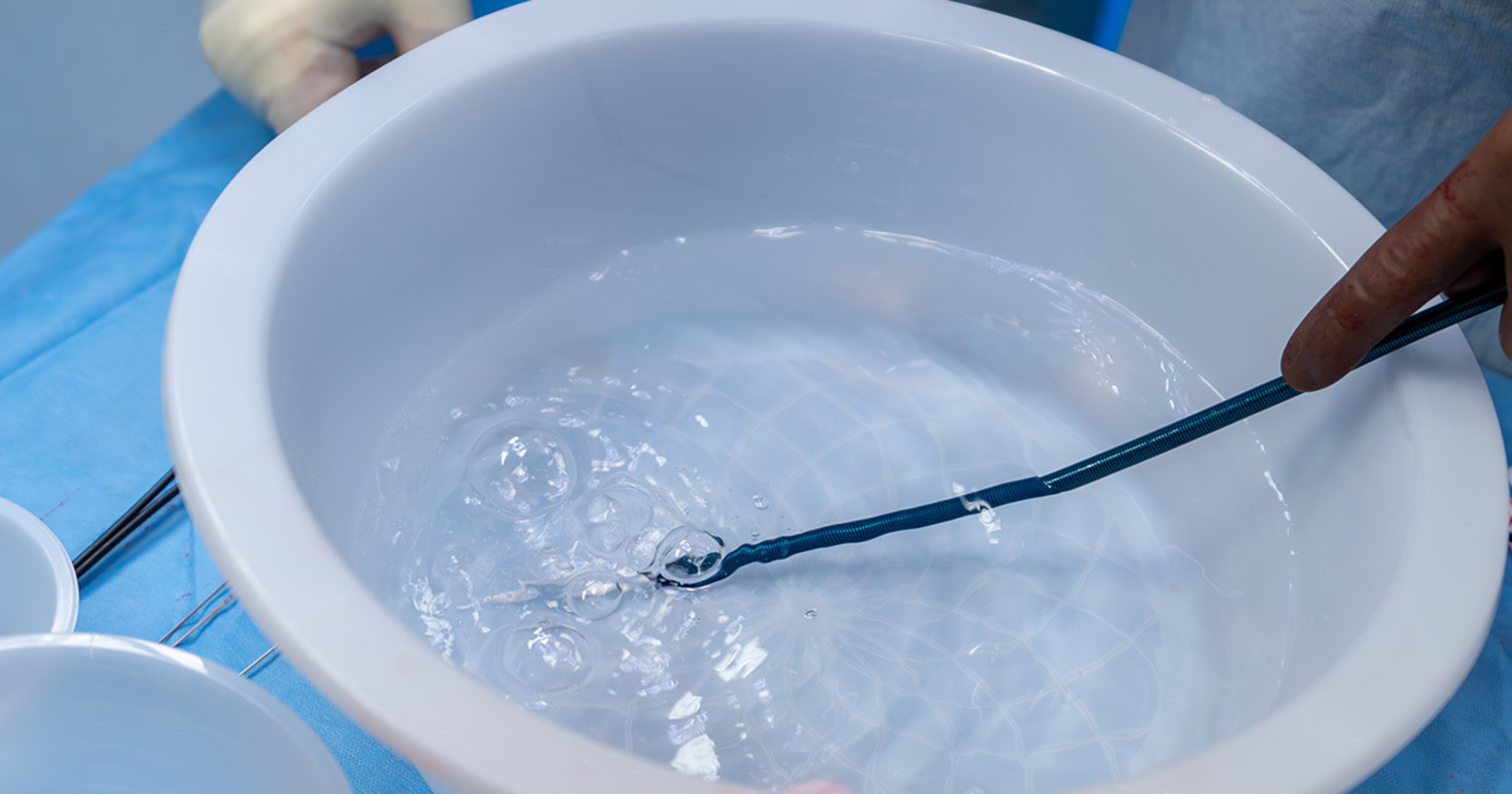The Institute for Cardiovascular Health Makes Medical History
UT Health Austin clinicians are advancing the field of cardiovascular care and setting a new standard for patient outcomes in health care globally
Reviewed by: Joshua Grimm, MD; Samuel D. Leonard, MD; Pedro G. R. Teixeira, MD
Written by: Lily Vining

The Institute for Cardiovascular Health, a clinical partnership between Ascension Seton and UT Health Austin, has made medical history as the second clinical practice in the world to perform major aortic surgery using a revolutionary new aortic stent graft flushing technique. This milestone highlights not just innovation, but the transformative power of collaboration in achieving better patient outcomes.
Attending the surgery were lead surgeon Samuel D. Leonard, MD, and Pedro G. R. Teixeira, MD, both UT Health Austin vascular surgeons in the Institute for Cardiovascular Health, along with Joshua Grimm, MD, a UT Health Austin cardiothoracic surgeon, who serves as both the Director of Cardiothoracic Education and the Associate Director of Thoracic Aortic Surgery for the Institute for Cardiovascular Health. Their combined expertise and collaborative approach were key to making this groundbreaking procedure possible, proving that multidisciplinary teamwork can transform health care.
Introducing a New Technique for Existing Care
The team successfully performed an endovascular stent graft procedure designed to reinforce weakened blood vessel walls by inserting a stent graft through a catheter via a minimally invasive approach. They utilized the Zenith Alpha 2.0 Thoracic Endovascular Graft, developed by Cook Medical, known for its advanced capabilities in complex aortic repairs.

What made this surgery especially pioneering was the use of CO₂ flushing, a departure from the traditional heparinized saline. This technique minimizes the introduction of excess oxygen, significantly reducing the risk of microembolic events—tiny air bubbles that can travel to the brain and cause strokes. By combining this new approach with the advanced graft design, the team has addressed one of the most critical risks in aortic surgery.
Fostering A Collaborative Environment
What truly sets the Institute for Cardiovascular Health apart is its unified cardiovascular department, where cardiac and vascular specialists work as a cohesive team. This collaboration allows for the rapid integration of cutting-edge research and a comprehensive approach to patient care, fostering knowledge-sharing and swift problem-solving.
“Our vascular and cardiac surgeons work seamlessly together, often in the same room during procedures,” explains Dr. Leonard. “This level of collaboration ensures that patients receive the best care from the right experts, all in one place.”

Transforming Cardiac Care in Central Texas
This procedure successfully treated a complex Type B aortic dissection—an often undiagnosed, life-threatening condition. Thanks to the minimally invasive approach and the expert care provided by the Institute for Cardiovascular Health care team, the patient was discharged just three days after surgery, showcasing the safety and efficacy of the method.
“The Institute for Cardiovascular Health is becoming a hub for aortic excellence,” shares Dr. Grimm. “We’re not just performing procedures; we’re reshaping the future of cardiovascular care in Central Texas.”
Advancing Patient Safety
The use of CO₂ flushing alongside the Zenith Alpha 2.0 Thoracic Endovascular Graft is setting a new benchmark for patient safety. By reducing the risk of stroke from microembolic events, the Institute for Cardiovascular Health is pioneering a new era in cardiovascular care. This forward-thinking approach reflects the team’s unwavering commitment to patient-centered care and continuous innovation.

“Our mission is clear: to lead with innovation, collaboration, and an unwavering focus on patient well-being,” says Dr. Teixeira. “This is just the beginning of what we can achieve together.”
Looking Ahead to Future Innovations
The success of this procedure marks only the beginning for the Institute for Cardiovascular Health. The team is already exploring the potential for CO₂ flushing in other procedures, with the goal of further improving patient safety and care standards.
This milestone underscores the profound impact of collaboration and the relentless pursuit of medical innovation. The Institute for Cardiovascular Health’s ongoing efforts are not only advancing the field of cardiovascular care but also setting a new standard for patient outcomes in health care globally.
For more information about the Institute for Cardiovascular Health or to request an appointment, call 1-512-324-3028 or visit here.